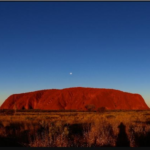BREAKING NEWS: A TSUNAMI warning has been issued for Australia after an earthquake struck earlier this evening.
Australian Government Bureau of Meteorology issued a tsunami marine threat warning for low-lying coastal areas along the coast of New South Wales.
Victoria and parts of Tasmania are also warned of a possible tsunami.
The warning is valid until midnight and warns residents between Gabo Island and Seal Rocks along the coast of New South Wales of strong wind gusts and waves that may peak twice as high as normal.
Victorians are facing a marine warning between Lakes Entrance and Gabo Island.
In Tasmania, residents are warned between the northern tip of Flinders Island to Low Rocky Point.
There’s also a land warning issued for Lord Howe Island, off the east coast of Australia.
There is a threat of major land inudation, flooding and dangerous waves for several hours, the bureau reports.
The powerful 7.8-magnitude earthquake struck off the southwest coast of New Zealand around 7.20pm.
The US Geological Survey says the undersea quake struck west of Invercargill on South Island.
The Hawaii-based Pacific Tsunami Warning Centre says it’s not immediately known if a tsunami has been generated but one could strike coastlines in the region within minutes to hours.
It’s believed the epicentre was 161km off the coast of New Zealand’s South Island at a depth of 33km.
Police in the town of Tuatapere on South Island, where the earthquake was centred, say they have reports of minor cracks in buildings and stock falling from supermarket shelves.
But they have received no reports of serious damage or injuries so far.
The quake was felt widely across the South Island.
More to come. …
Latest Update:
By Heather Langan
July 16 (Bloomberg) — New Zealand was spared a destructive tsunami after a magnitude-7.8 earthquake struck off its South Island, the U.S. Pacific Tsunami Warning Center said.
A tsunami warning issued by the center was in effect for about 2 1/2 hours after the quake hit at 9:22 p.m. New Zealand time yesterday, with the residents of Auckland and Wellington advised of a possible threat, according to e-mailed alerts. No other countries in the Pacific were affected. The quake was followed by a magnitude-5.8 aftershock 19 minutes later.
Sea-level readings indicated a tsunami had been generated by the temblor, the center said, though there was no report of any impact. At Jackson Bay, the sea had risen 0.17 meter (6.7 inches) above normal, the agency said. The coastal area near the epicenter is sparsely populated and includes Fiordland National Park.
“When no major waves are observed for two hours after the estimated time of arrival or damaging waves have not occurred for at least two hours then local authorities can assume the threat is passed,” the center said. “Danger to boats and coastal structures can continue for several hours due to rapid currents.”
The temblor struck 150 kilometers (95 miles) west-northwest of Invercargill on the South Island, at a depth of 35 kilometers, the U.S. Geological Survey said.
The earthquake shook buildings as far away as Christchurch, the biggest city on the South Island and 532 kilometers to the northeast of the epicenter.
Power Lines
The quake brought down some power lines in Invercargill, local police inspector Olaf Jensen said by telephone. He said he didn’t have any reports of serious damage and couldn’t confirm an NZ Radio report of cracked buildings in Tuatapere, the closest town to the epicenter. Police don’t expect to get a better sense of damage until daylight, Jensen said.
Meridian Energy Ltd.’s Manapouri Power Station near the epicenter was operating normally after the earthquake, company spokeswoman Claire Shaw said by telephone. Staff members were making checks of the station for damage, she said.
There was no immediate information on Rio Tinto Plc’s Tiwai Point aluminum-smelting plant on New Zealand’s Tiwai peninsula, the company’s London-based spokesman, Nick Cobban, said in a telephone interview
Related Posts








